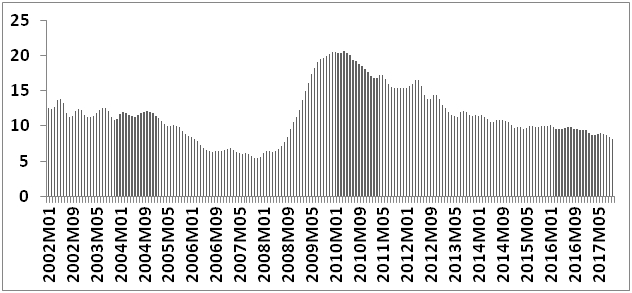
Ilustratīvs attēls no pixabay.com
Some may still be in denial but signs of labour market overheating are clear and have been so for a while. Expect this not just to continue in 2018 but to worsen. Here are ten reasons why.
1) Unemployment has been coming down relentlessly since the financial crisis ended. At 8.2% in October 2017, it is at its lowest since August 2008, i.e. the lowest for more than nine years.
Figure 1: Unemployment rate, monthly, 2002-I – 2017-10
Source: Central Statistical Bureau of Latvia
2) With low unemployment rates the number of vacant jobs grows – vacancies cannot easily be filled and their number has grown quite dramatically in Latvia. CSB (the Central Statistical Bureau) has a data series only from 2008 but it is quite telling, see Figure 2. 17332 unfilled positions in the 3rd quarter of 2017 were the highest recorded since spring 2008. A recent study by the Latvian Chamber of Commerce and Industry found that no less than 61.2% of employers have problems finding qualified work force, yet another indicator of a very tight labour market.














